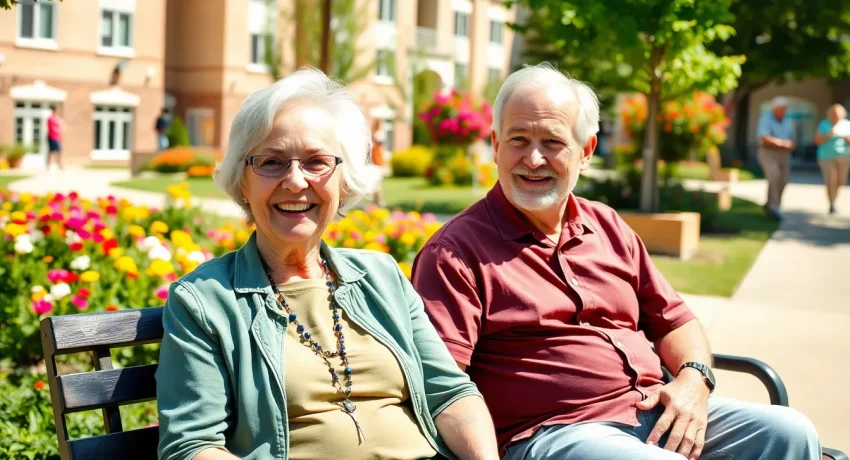Table of Contents
ToggleAs retirement approaches, many face the exciting yet daunting task of finding the perfect place to call home. Retirement housing options have evolved significantly, offering a range of choices tailored to various lifestyles and needs. From active adult communities to assisted living facilities, the landscape of retirement living is vibrant and diverse.
Choosing the right retirement housing isn’t just about comfort; it’s about enhancing quality of life. With amenities designed to foster social connections and promote wellness, retirees can enjoy their golden years to the fullest. Understanding these options helps individuals make informed decisions that align with their preferences and aspirations.
Overview of Retirement Housing
Retirement housing encompasses a variety of living arrangements designed to support the needs of retirees. Options include active adult communities, independent living facilities, assisted living residences, and continuing care retirement communities (CCRCs). Each option caters to different lifestyle preferences and care requirements, allowing retirees to find a suitable environment.
Active adult communities provide a vibrant atmosphere with recreational activities, fitness programs, and social clubs. These communities often promote a maintenance-free lifestyle, allowing residents to focus on leisure and personal interests.
Independent living facilities offer similar amenities but might also include housekeeping services and meal plans, emphasizing comfort and convenience. Assisted living facilities provide a higher level of care, featuring assistance with daily activities such as bathing, dressing, and medication management.
Continuing care retirement communities (CCRCs) combine various living arrangements within one campus, enabling residents to transition through different levels of care as their needs change. This option supports long-term residency while maintaining familiarity and social connections.
Several amenities enhance the experience of retirement housing. These include fitness centers, outdoor spaces, organized activities, and transportation services. Housing design often prioritizes accessibility, ensuring safety and comfort for all residents.
Choosing the right retirement housing significantly impacts a retiree’s quality of life. Factors such as location, community culture, and available services play crucial roles in this decision-making process. Prioritizing personal preferences and aspirations leads to a fulfilling retirement experience.
Types of Retirement Housing

Retirement housing options vary widely, each designed to meet specific needs and preferences of retirees. Understanding the different types helps individuals make informed decisions for their retirement years.
Independent Living Communities
Independent living communities offer a self-sufficient lifestyle for retirees. Residents enjoy their private apartments or homes with access to communal amenities. These communities typically provide recreational programs, scheduled transportation, and dining options. Security features enhance peace of mind, while social events foster connections among residents.
Assisted Living Facilities
Assisted living facilities support individuals who require assistance with daily activities. These residences provide personalized care, such as help with medication management, grooming, and bathing. Facilities often include 24-hour staffing, ensuring residents receive timely support. Common areas promote social interaction, contributing to residents’ emotional well-being.
Continuing Care Retirement Communities
Continuing care retirement communities (CCRCs) offer a comprehensive approach to aging with multiple care levels on one campus. Residents can transition from independent living to assisted living or skilled nursing care as their needs change. This seamless progression reduces the stress of moving and allows seniors to maintain established relationships. CCRCs typically feature numerous amenities, ensuring an engaged lifestyle.
Benefits of Retirement Housing
Retirement housing offers significant advantages that enhance the quality of life for retirees. These benefits include social engagement opportunities and easy access to healthcare services.
Social Engagement Opportunities
Retirement housing provides numerous social engagement opportunities. Residents connect through organized activities, clubs, and events. Engaging in group exercises, game nights, and communal dining fosters friendships and combats loneliness. Active adult communities, in particular, emphasize a lively social atmosphere, encouraging interaction among neighbors and promoting a sense of belonging.
Access to Healthcare Services
Access to healthcare services is a crucial benefit of retirement housing. Many facilities have on-site healthcare professionals or partnerships with nearby medical centers. This proximity enables timely medical attention and reduces transportation barriers. Assisted living residences specifically cater to residents needing daily support, offering services like medication management and routine health monitoring. Continuing care retirement communities ensure seamless transitions between different care levels as health needs change.
Considerations When Choosing Retirement Housing
Selecting retirement housing involves multiple factors that affect overall quality of life. Key considerations include location, amenities, and financial implications, which play a vital role in ensuring a comfortable and fulfilling retirement.
Location and Amenities
Location significantly impacts lifestyle and convenience. Proximity to family, friends, and essential services matters. Retirees often prefer areas close to healthcare facilities, grocery stores, and recreational options. Amenities contribute to community engagement and quality of life. Active adult communities typically feature pools, fitness centers, and walking trails, while independent living facilities may offer social gathering areas and organized activities. Assuring the chosen community aligns with personal interests enhances both satisfaction and well-being.
Financial Implications
Understanding financial implications remains crucial when evaluating retirement housing options. Costs vary across different types of housing, influencing budget considerations and long-term financial planning. Monthly fees often encompass maintenance, utilities, and community amenities. Potential additional costs, such as healthcare services or increased support needs, require attention. Researching payment structures, including buy-in fees or rental agreements, ensures retirees make informed decisions that align with their financial situations.
Choosing the right retirement housing is a pivotal step toward a fulfilling and enjoyable retirement. With various options available retirees can find a community that aligns with their lifestyle and care needs. Prioritizing social connections and wellness amenities can significantly enhance their quality of life.
As they navigate this important decision it’s essential to consider factors like location and financial implications. By doing thorough research and reflecting on personal preferences retirees can make informed choices that support their aspirations for a vibrant and engaging retirement experience.




